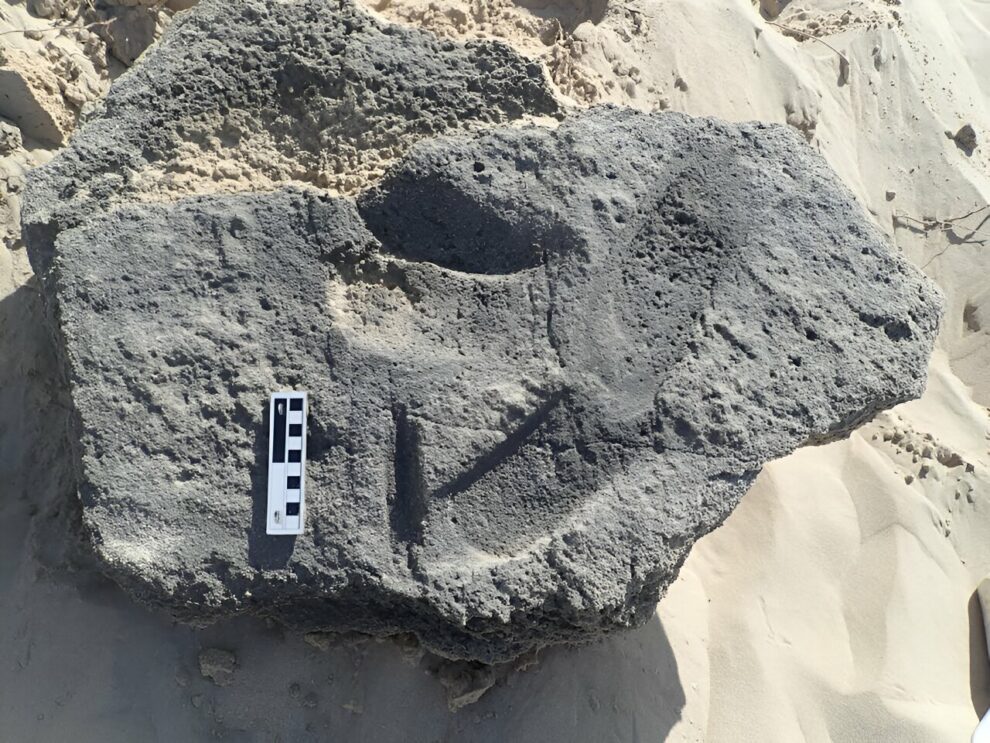The study of fossil tracks, ichnology, has helped trace ancient footprints made by prehistoric humans wearing shoes.
A team of researchers working under the Cape south coast ichnology project in South Africa encountered more than 350 vertebrate tracksites along the coast over 15 years.
Upon analysis, they found that while some foot imprints of humans indicate that they were either walking or jogging barefoot, the other similar tracks were only without toe impressions.
Tracing back to the Middle Stone Age
The Conversation reported that scientists traced ancient technologies that created bone tools used in sewing to studying ancient hominin tracks. Their research revealed that two prime places on Earth comprise footprint evidence of early shod hominins – western Europe and the Cape coast of South Africa.
These footprints are possibly 70,000 to 150,000 years old, focusing on the Middle Stone Age. Upon sighting the ancient footprints, archaeologists designed footwear to imprint the tracks.
Three tracksites were located on the Cape South Coast that might have been made by shod humans (a fourth site unfortunately rapidly deteriorated in quality and slumped into the sea), The Conversation reported.
“The global record of sites attributed to shod trackmakers is sparse. Until now, only four sites older than 30,000 years have been postulated, all from western Europe, including a Neanderthal site.”
However, the discoveries’ evidence is inconclusive. Scientists said: “Today, the ancient dune surfaces our ancestors walked along are cemented and preserved as aeolianites. We have previously reported on the tracks of our barefoot Homo sapiens ancestors along this coastline and now focused on three sites that appeared to be of hominin origin and were crisply outlined, but contained no evidence of toe impressions.”
Archaeologists further analyzed existing knowledge of sandals worn by the indigenous San people on the sands of the Kalahari desert and drew accounts of museum specimens and depictions of footwear in the San rock art record.
Crafting the imprints
Upon further research, the team crafted ancient-style footwear and used it to make tracks on the beaches and dunes of the Cape.
The experimentation led them to surmise that “an open, hard sole design, with tracks made on moist, moderately soft but nonetheless cohesive sand, best fitted the findings at the three fossil tracksites,” stated The Conversation.
The findings indicate that ancient humans deliberately developed footwear as a logical solution to avoid suffering lacerations if barefoot while foraging on the Cape Coast. Other incentives to wear footwear could include protection from heat and cold.
The findings were published in the journal Ichnos.
Study abstract:
When and where did humans first fashion footwear? Ichnology holds the potential to answer this unresolved question in palaeoanthropology. The global record of sites from which shod-hominin tracks have been considered is sparse. Consideration of proxies for footwear use, in conjunction with areas of known Middle Stone Age/Middle Paleolithic hominin tracksites, suggests two suitable regions in which to search for shod-hominin tracks of this age: southern Africa and Western Europe. Inhabitants of these areas in the Middle Stone Age would have had the means, motive and opportunity to fashion footwear. Ichnological evidence from three palaeosurfaces on South Africa’s Cape coast, in conjunction with neoichnological study, suggests that humans may indeed have worn footwear while traversing dune surfaces during the Middle Stone Age. The hominin track record may be biased towards identification of tracks made by barefoot individuals, therefore the development of criteria for the identification of shod-hominin tracks should aid in future interpretation efforts.
Source : Interesting Engineering

















Add Comment